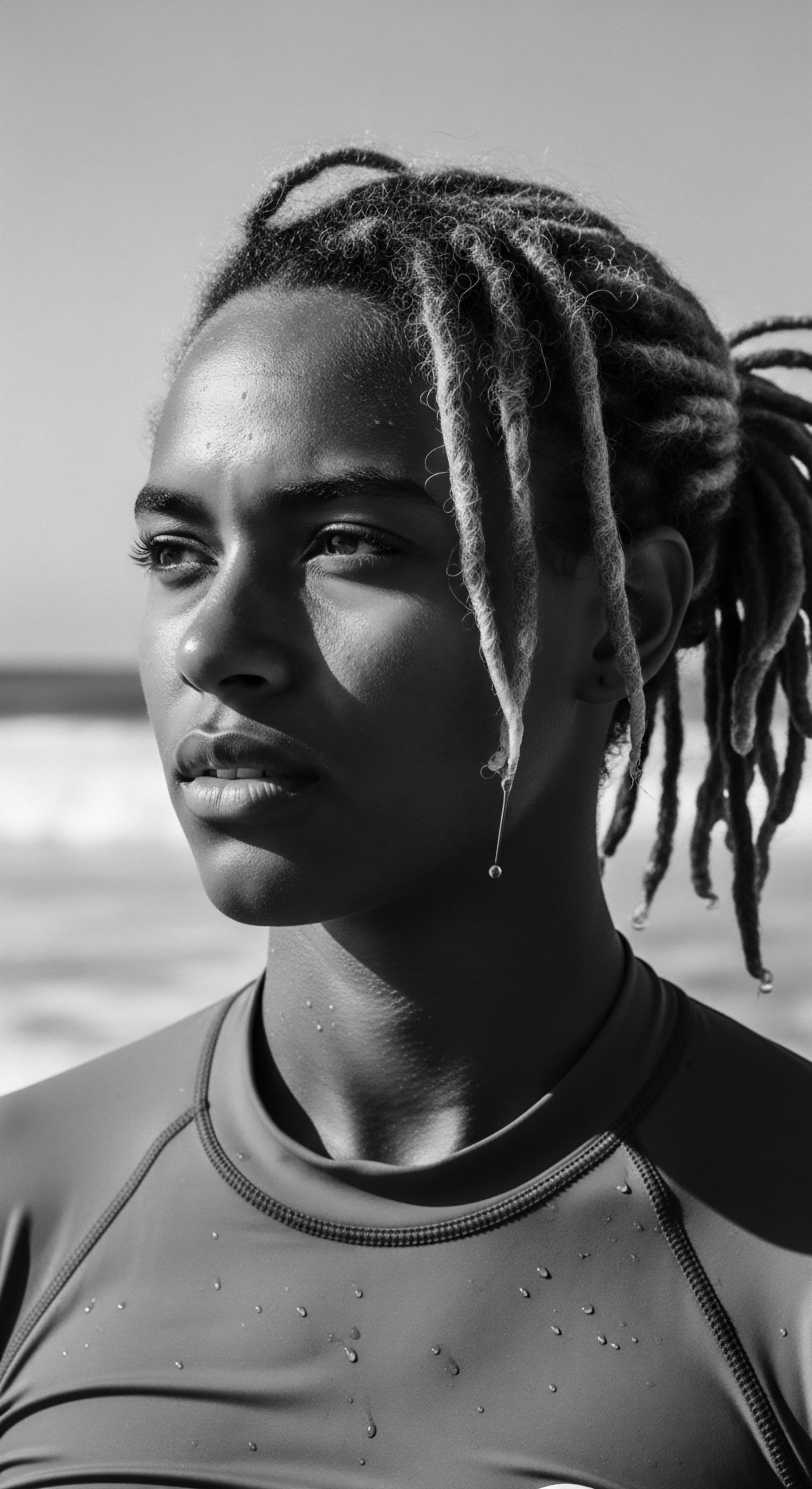
Roots
Consider a strand of hair, a seemingly delicate filament. For those whose ancestry traces through continents steeped in sun and complex stories, this strand holds more than mere biology; it carries a living memory. It whispers of the journey, of resilience, of care passed down through generations.
To truly understand how the very water we use to cleanse impacts this heirloom, this singular fiber, we must first allow ourselves to hear these whispers. The question of water hardness, though framed by modern science, speaks to an ancient dance between our physical selves and the elements provided by the earth.
Throughout human existence, water has been more than a cleansing agent; it has been life, a spiritual conduit, a central actor in daily rituals. For communities with textured hair, particularly those from the African diaspora, the interaction with water shaped how hair was tended, honored, and presented. When discussing water hardness, we are not simply detailing mineral content; we are recognizing the legacy of how diverse environments sculpted the relationship between hair and its care.
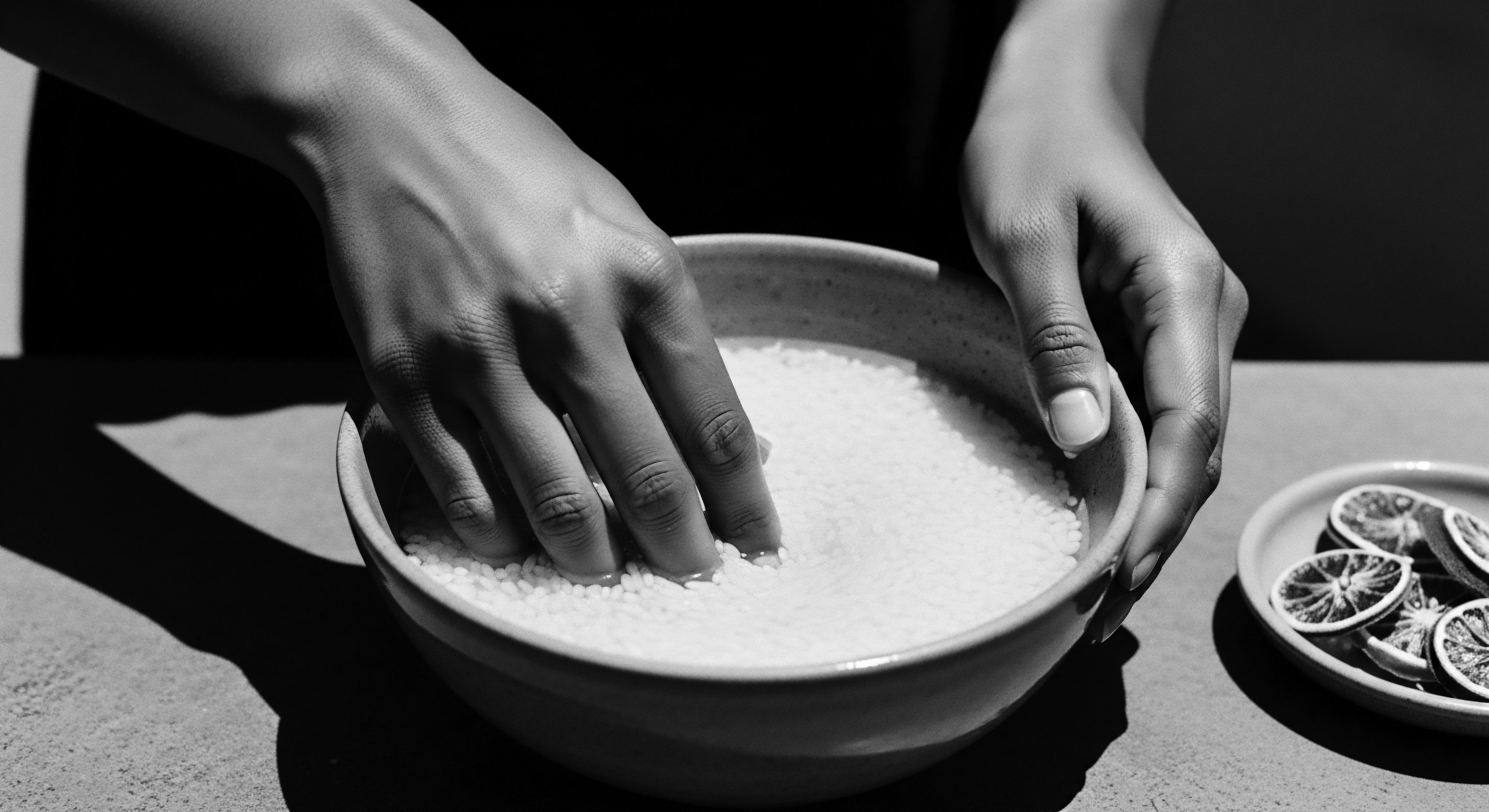
Hair Anatomy and Its Ancient Context
The anatomy of textured hair, with its characteristic coils, curls, and kinks, possesses a unique structure. The hair shaft, comprising the cuticle, cortex, and medulla, responds distinctly to external forces. The outermost layer, the Cuticle, resembles overlapping scales, and its integrity profoundly influences hair health. In textured hair, these scales are often naturally raised, allowing for moisture entry but also greater susceptibility to moisture loss.
This inherent structure means textured strands are more prone to dryness compared to straighter hair types. From an ancestral perspective, this intrinsic quality meant a greater emphasis on moisture retention through oils, butters, and various emollients, long before modern chemistry explained the why.
Historically, water quality varied widely across regions, influencing practices. Our ancestors, observant and resourceful, developed methods adapted to their local environments. Those near rivers or soft water springs likely experienced different hair responses than those in areas with hard, mineral-rich water. This unwritten knowledge, carried through time, formed the bedrock of hair care traditions.
The intimate relationship between our textured hair and the water we employ for its care is a dialogue echoing through ancestral wisdom.
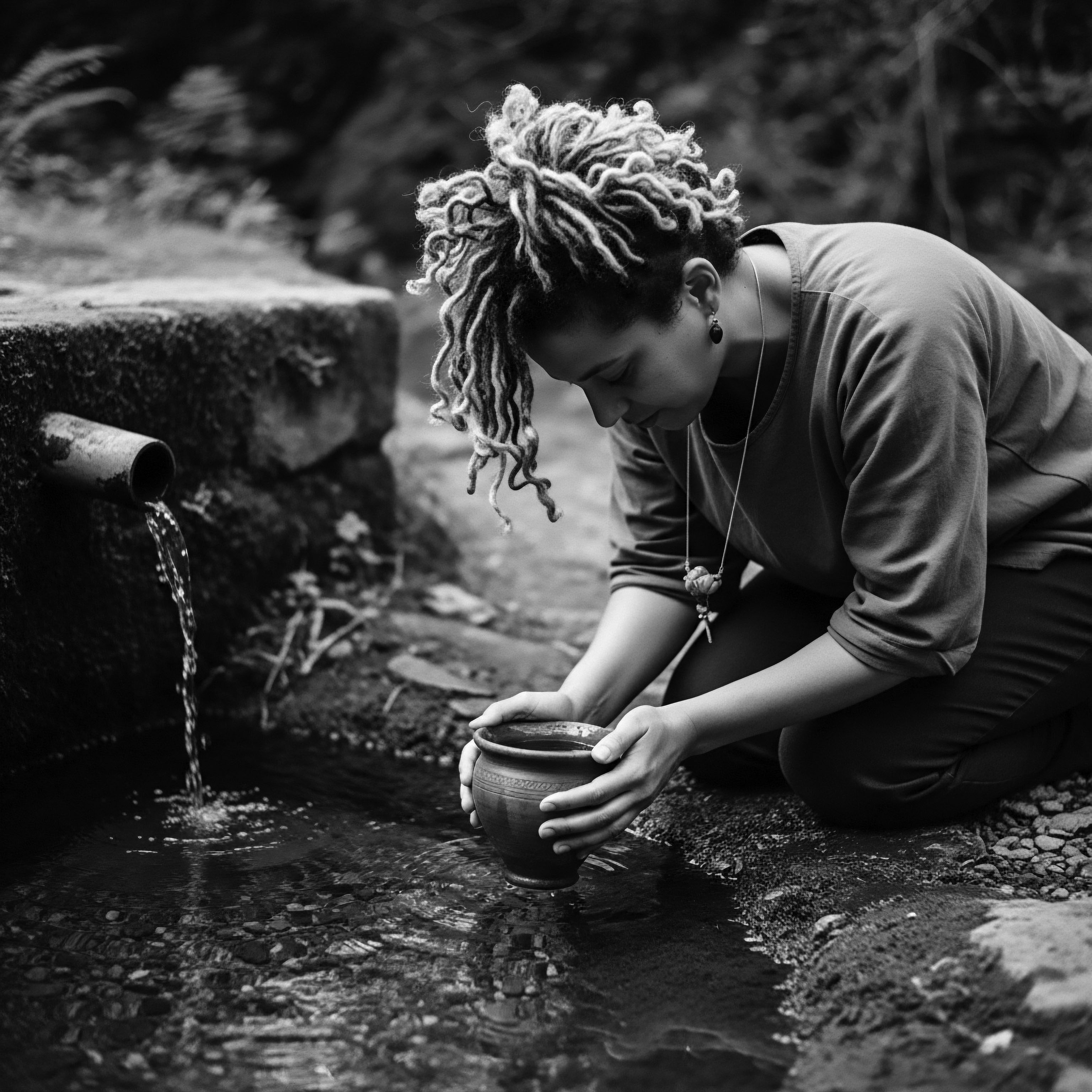
Understanding the Hard Water Phenomenon
Hard water contains elevated concentrations of dissolved Minerals, primarily calcium and magnesium ions. These minerals derive from water flowing through rock formations rich in these compounds. While generally not harmful for consumption, their presence alters the very nature of water’s interaction with hair.
When hard water meets shampoo, the calcium and magnesium react with cleansing agents, forming a soapy film or residue. This residue does not easily rinse away, clinging to hair strands.
The natural pH of human hair typically rests on the acidic side, ranging from 4.5 to 5.5. This slight acidity keeps the hair cuticle smooth and closed. Hard water, often having an alkaline pH (above 7), can disrupt this delicate balance.
An alkaline environment causes the cuticles to lift, leading to increased porosity, a rougher texture, and reduced shine. This chemical interaction, though described by modern science, explains observations made by caregivers centuries ago as they noticed different responses from various water sources.

Ancestral Water Sources and Hair Responses
For generations, communities across Africa relied on natural water sources—rivers, streams, wells—each with its own mineral profile. The understanding of which water worked best for hair, or how to mitigate less ideal water, was part of collective wisdom. There is no single, monolithic “African hair care.” Instead, practices adapted to local conditions.
- River Waters ❉ Often softer, less mineral-laden, these might have allowed for easier cleansing and a feeling of lighter, more pliable hair.
- Well Waters ❉ Depending on geological formations, well water could be very hard, presenting challenges similar to those faced today.
- Rainwater Collection ❉ Rainwater, naturally soft, would have been highly prized for its gentle cleansing properties, perhaps used for special rituals or particularly delicate hair care.
These historical considerations frame our present discussion. They remind us that the impact of water hardness is not a new problem, but a timeless challenge for textured hair, met through generations of adaptation and intuitive understanding.
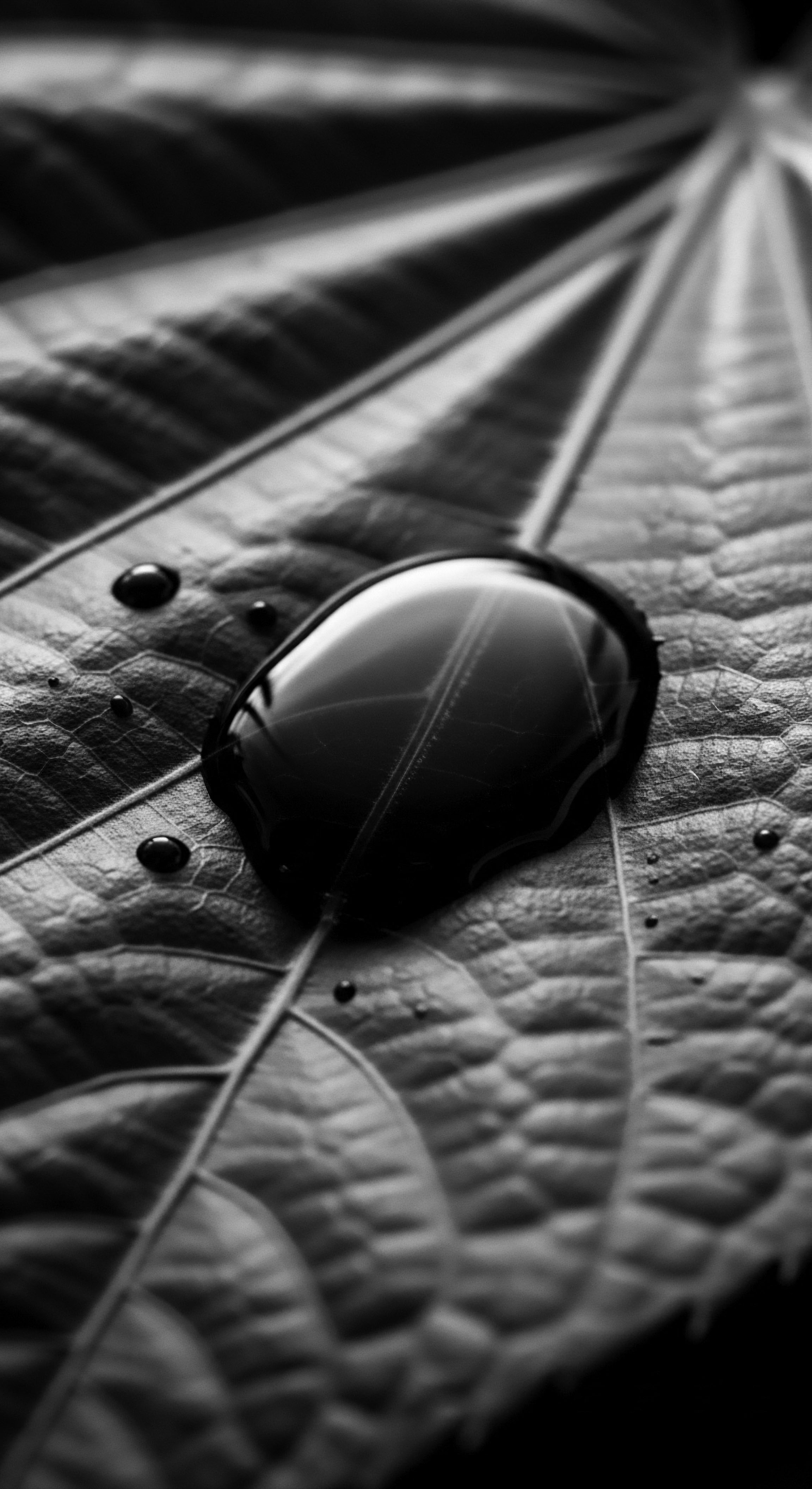
Ritual
The touch of water upon textured hair has always been more than a cleansing act; it is a ritual. From the communal washing under open skies to the intimate moments of care within family compounds, water has held a sacred place. Its quality, whether soft or harsh, shaped these rituals, dictating the dance between cleansing and conditioning, between preparation and adornment. Long before laboratories analyzed water chemistry, ancestral hands felt the difference water made on a strand, developing routines to honor and protect what they knew to be precious.
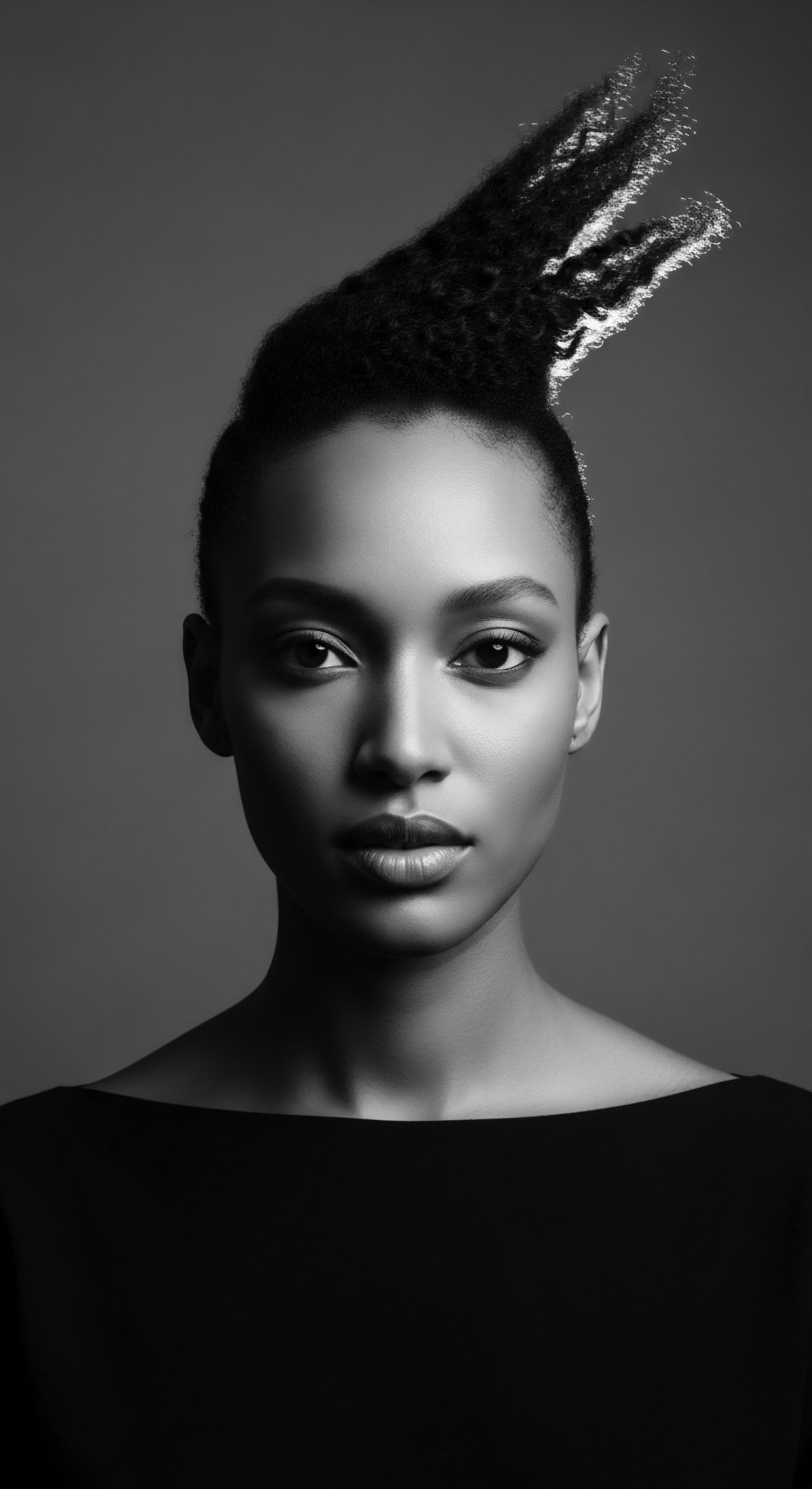
Water’s Role in Ancestral Hair Cleansing
In many traditional African societies, hair care was a profoundly communal and spiritual undertaking. Elaborate hairstyles signified social status, age, marital status, and even spiritual connection. The preparation of hair for these styles often began with cleansing. While modern shampoos are a relatively recent invention, appearing in the early 20th century, earlier methods involved various natural cleansers.
Consider the scarcity of water in some regions, such as among the Himba People of Namibia. Their hair rituals demonstrate an extreme adaptation to hard water conditions and limited water availability. Instead of frequent water washing, Himba women apply a paste known as Otjize, a mixture of aromatic resin, animal fat, and ground red pigmented stone. This paste not only offers a distinctive red hue symbolizing blood and earth but also acts as a cleansing and conditioning agent, protecting the hair and skin in an arid environment.
This practice is a powerful historical example of how communities adapted their hair care rituals when water quality and quantity were prohibitive. The Himba’s approach highlights how the challenges of water quality, or its absence, spurred inventive and deeply cultural hair care solutions, centered on maintenance without traditional water washing.
The art of hair care, shaped by available water, evolved through generations, reflecting a heritage of adaptation and ingenuity.
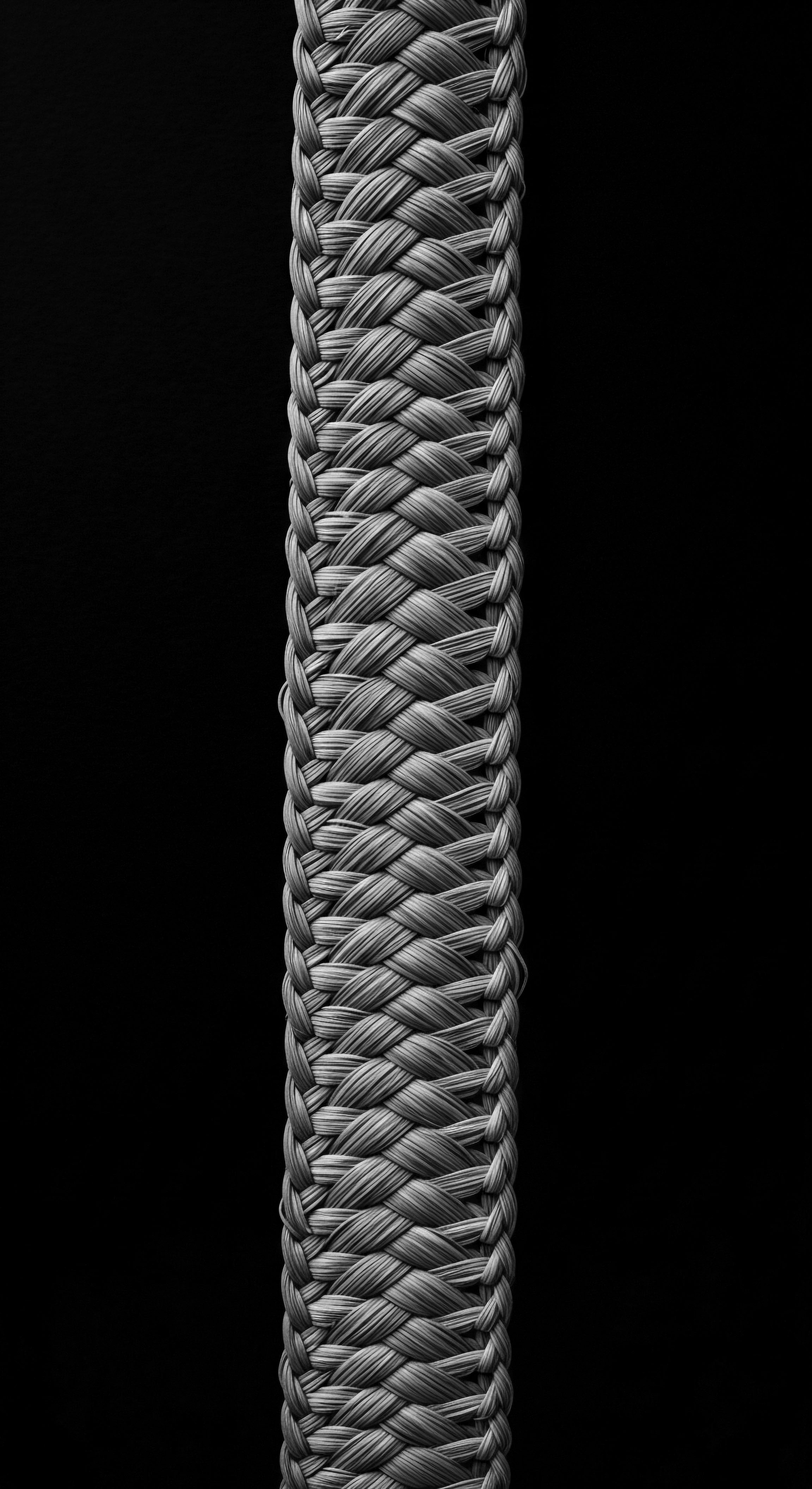
Conditioning and Water Softening Traditions
The challenges presented by hard water—hair feeling stiff, dry, or difficult to manage—were likely recognized by ancestral communities, even without scientific terminology. These challenges would have influenced the reliance on emollients and acidic rinses. Traditional African hair care often employed natural butters, oils, and herbs to maintain moisture. These ingredients helped counteract the stripping effects of harsh water, providing a protective layer and suppleness to the strands.
While formal water softeners are modern inventions, some traditional practices implicitly acted as softening or conditioning agents. Rinses made from acidic fruits or plants, such as those that might contain natural chelating agents, could have helped mitigate mineral buildup. The acidity of lemon juice or certain fermented ingredients, for instance, could have helped to remove mineral deposits and restore the hair’s natural balance. This intuition, passed down through families, reveals a profound, unwritten knowledge of how to work with the elements.
The cultural significance of hair washing extends to communal bonding. The act of tending to one another’s hair became a social ritual, a time for sharing stories, wisdom, and strengthening family ties. Within these circles, knowledge about different water sources and their effects, about the herbs that softened hair, or the oils that protected it, would have been shared and refined.
| Ancestral Practice Oiling & Buttering |
| Heritage Connection and Purpose Provided moisture, sealed strands, and offered protection from environmental stressors. Often incorporated into daily routines. |
| Modern Scientific Link to Water Hardness Counteracts the drying and stiffening effects of hard water minerals by forming a barrier and providing slip. |
| Ancestral Practice Acidic Rinses (e.g. fermented plant extracts) |
| Heritage Connection and Purpose Used for cleansing, adding shine, and conditioning. The acidic nature was likely observed to improve manageability. |
| Modern Scientific Link to Water Hardness Helps dissolve mineral buildup from hard water and rebalances the hair's natural pH after washing, closing the cuticle. |
| Ancestral Practice Protective Hairstyles (braids, twists) |
| Heritage Connection and Purpose Shielded hair from physical damage, dirt, and environmental elements. Had deep social and spiritual meanings. |
| Modern Scientific Link to Water Hardness Reduces exposure of strands to hard water during frequent washes, minimizing mineral deposition and breakage. |
| Ancestral Practice Infrequent Washing |
| Heritage Connection and Purpose Conserved water in dry regions and preserved hair's natural oils. Often paired with dry cleansing methods. |
| Modern Scientific Link to Water Hardness Minimizes continuous exposure to hard water, limiting mineral buildup and subsequent dryness, particularly for moisture-retentive textured hair. |
| Ancestral Practice These practices, rooted in the heritage of diverse communities, demonstrate an intuitive understanding of hair's needs in varying water conditions. |
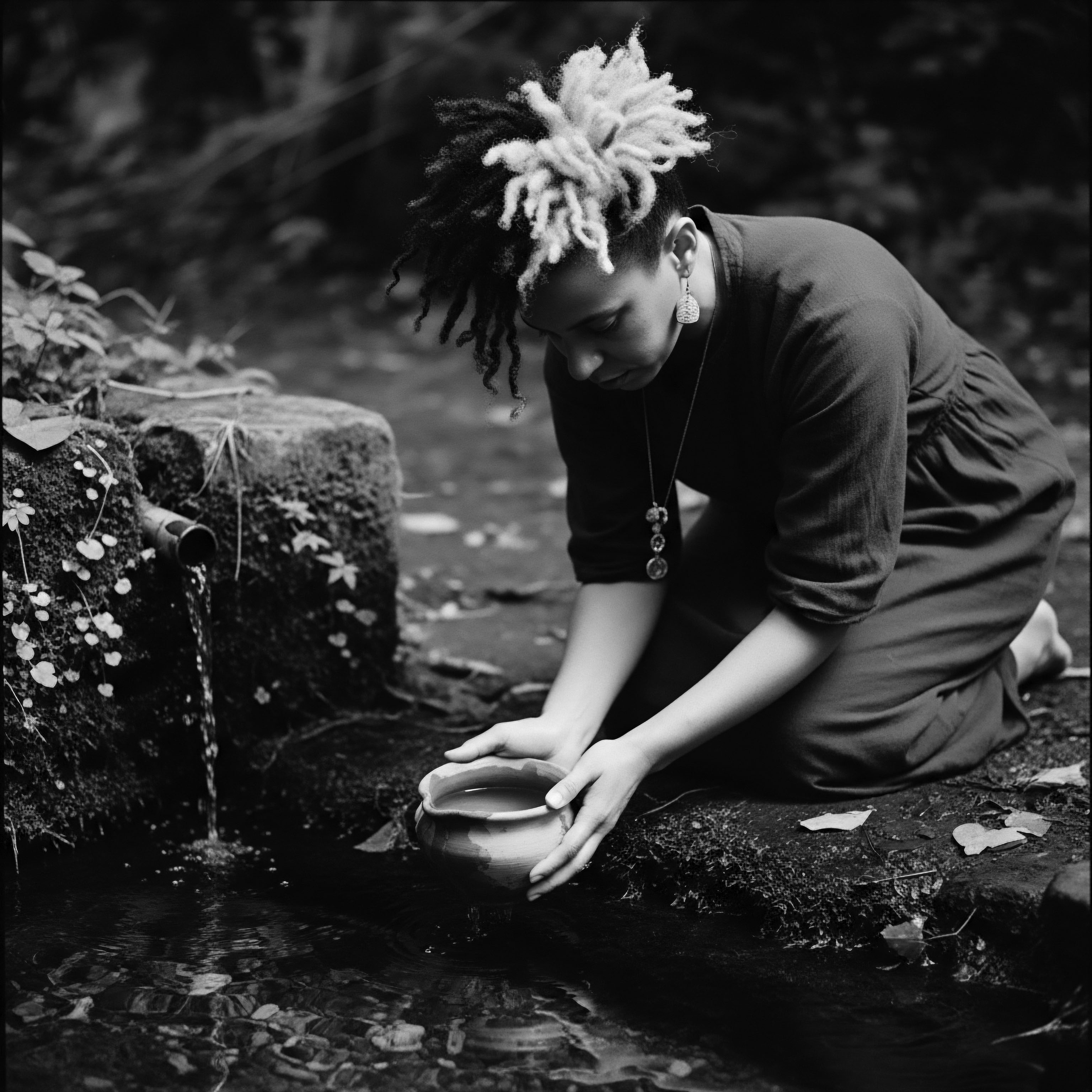
Preserving Hair’s Integrity
The memory of these adaptations lives within the collective understanding of textured hair care today. The emphasis on moisturizing, detangling, and scalp health, so central to contemporary regimens, echoes these ancestral priorities. The practice of co-washing (washing with conditioner instead of shampoo), a popular method for many with textured hair, may be seen as a modern echo of a long-held desire to minimize the stripping effects of harsh cleansing, whether from commercial products or mineral-laden water.
The sensitivity of textured hair to its environment, especially to water, meant that rituals had to be flexible and deeply attuned to the nuances of local resources. This history reminds us that even the simplest act of washing hair is a connection to a profound legacy of care, wisdom, and adaptation.
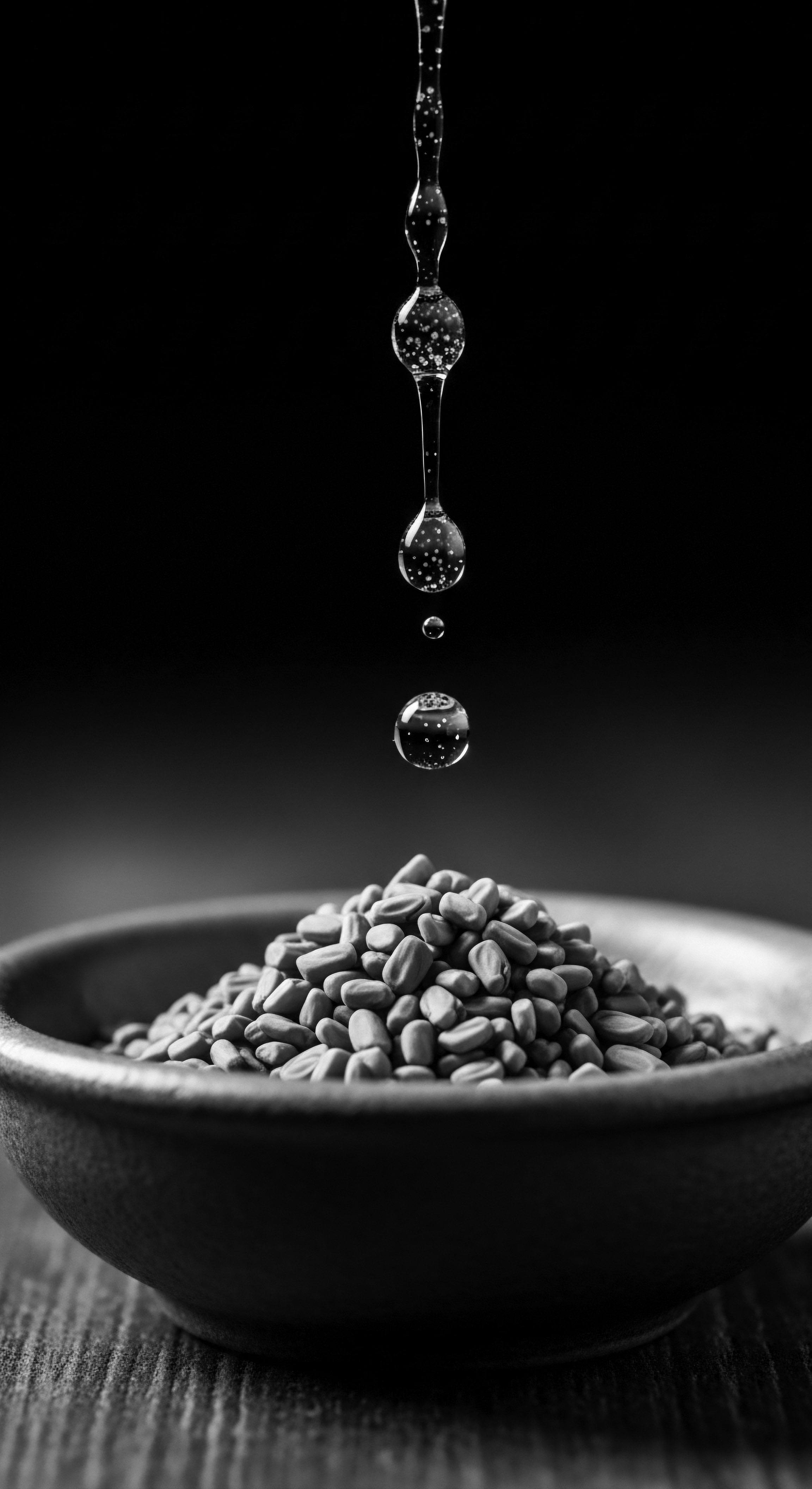
Relay
The journey of textured hair is one of enduring strength, a testament to ancestral practices passed through the generations. The challenge of water hardness, seemingly a modern scientific query, finds deep resonance within this very heritage. Understanding the scientific mechanisms at play allows us to contextualize historical struggles and validate the efficacy of ancient care rituals. It becomes clear that the impact of water’s mineral content is a consistent thread across time, influencing the very integrity of each strand.
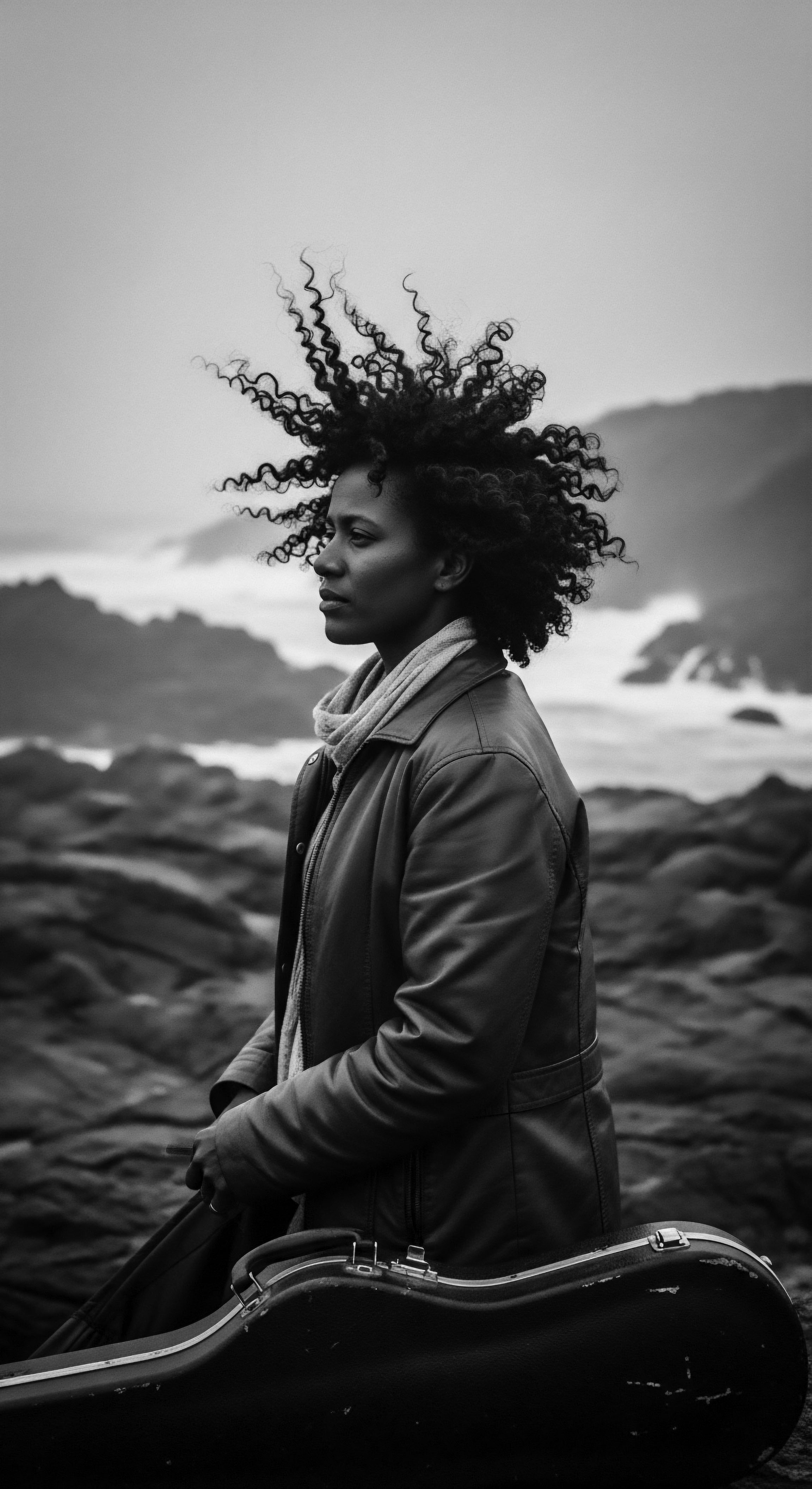
How Water’s Mineral Content Interacts with Hair
When water contains a high concentration of dissolved calcium and magnesium, it is classified as Hard Water. These positively charged ions, upon contact with hair, especially hair with a naturally negative charge, readily bond to the hair shaft. This mineral adhesion creates a microscopic film, a veritable barrier that impedes the hair’s ability to absorb moisture. For textured hair, which inherently seeks and requires ample moisture due to its coiled structure, this barrier can lead to chronic dryness.
The presence of these minerals also affects the hair’s PH Balance. Hair’s natural pH, ideally between 4.5 and 5.5, ensures the cuticles remain closed and smooth. Hard water, typically alkaline, can elevate this pH, causing the cuticles to lift. This opened cuticle layer makes the hair more susceptible to external damage, further contributing to a rough texture, frizz, and a diminished natural luster.
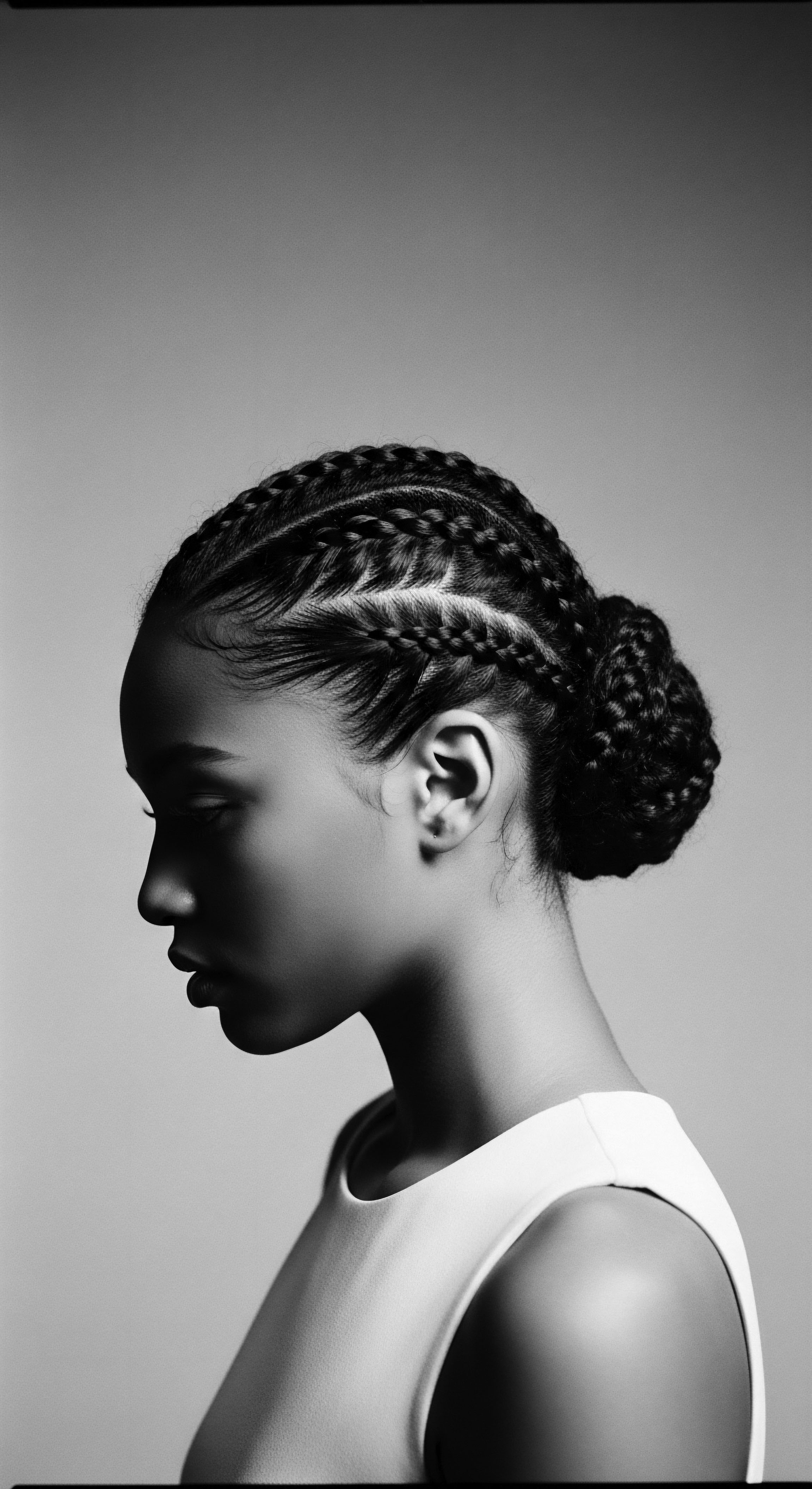
The Porosity Puzzle and Ancestral Hair
Hair porosity, the ability of hair to absorb and retain moisture, is significantly affected by hard water. Textured hair, due to its varied curl patterns, can have a range of porosities. High porosity hair, with its more open cuticles, is particularly vulnerable to mineral penetration.
A study found that mineral deposits in hair increased its stiffness and made it more difficult to comb. This mineral deposition, over time, directly damages the hair cuticle and increases porosity, creating a cycle of dryness and breakage.
Consider the implications of this scientific understanding for ancestral hair care. In communities where hard water was the norm, the constant exposure would have gradually altered hair structure, making it coarser and more prone to tangling. This environmental pressure undoubtedly informed the emphasis on detangling practices and the generous application of protective oils and butters, intuitively addressing the physical changes hard water caused.
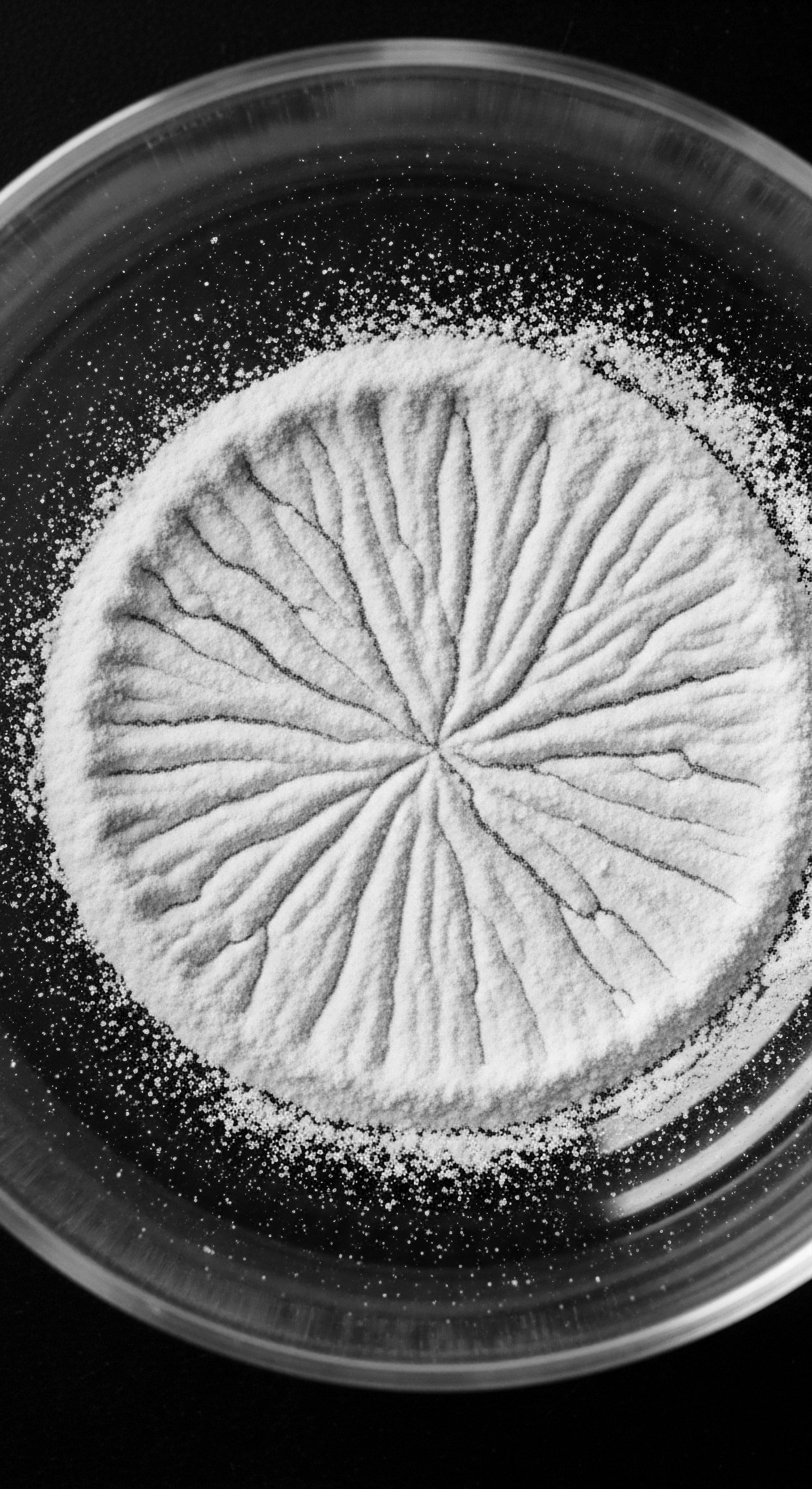
A Case from the Diaspora ❉ Water, Resilience, and Legacy
The journey of textured hair through the African diaspora is a compelling testament to adaptation and resilience. A significant, yet often overlooked, aspect of this journey involves the unseen challenge of water. During the transatlantic slave trade, enslaved Africans were forcibly stripped of their cultural identifiers, including their elaborate hairstyles.
Without access to their traditional hair care tools and practices, and often subjected to unfamiliar, potentially hard water sources in new lands, they had to adapt. The communal hair care practices that arose on plantations, often during rare days of rest, were born of necessity and a desire to retain dignity and connection.
While direct studies on hard water’s specific impact on enslaved Africans’ hair are not available, we can infer its role. The introduction of unfamiliar water chemistries, combined with grueling labor and lack of proper resources, would have exacerbated the inherent dryness of textured hair. The resourceful use of available materials—animal fats, kitchen ingredients—to condition and protect hair, even under duress, speaks volumes. These adaptations, born of profound adversity, formed the bedrock of Afro-diasporic hair traditions, demonstrating a continuous, living heritage of working with what the environment provided.
Scientific discovery confirms what centuries of hands-on wisdom already knew ❉ the water we wash with profoundly shapes the very nature of textured hair.
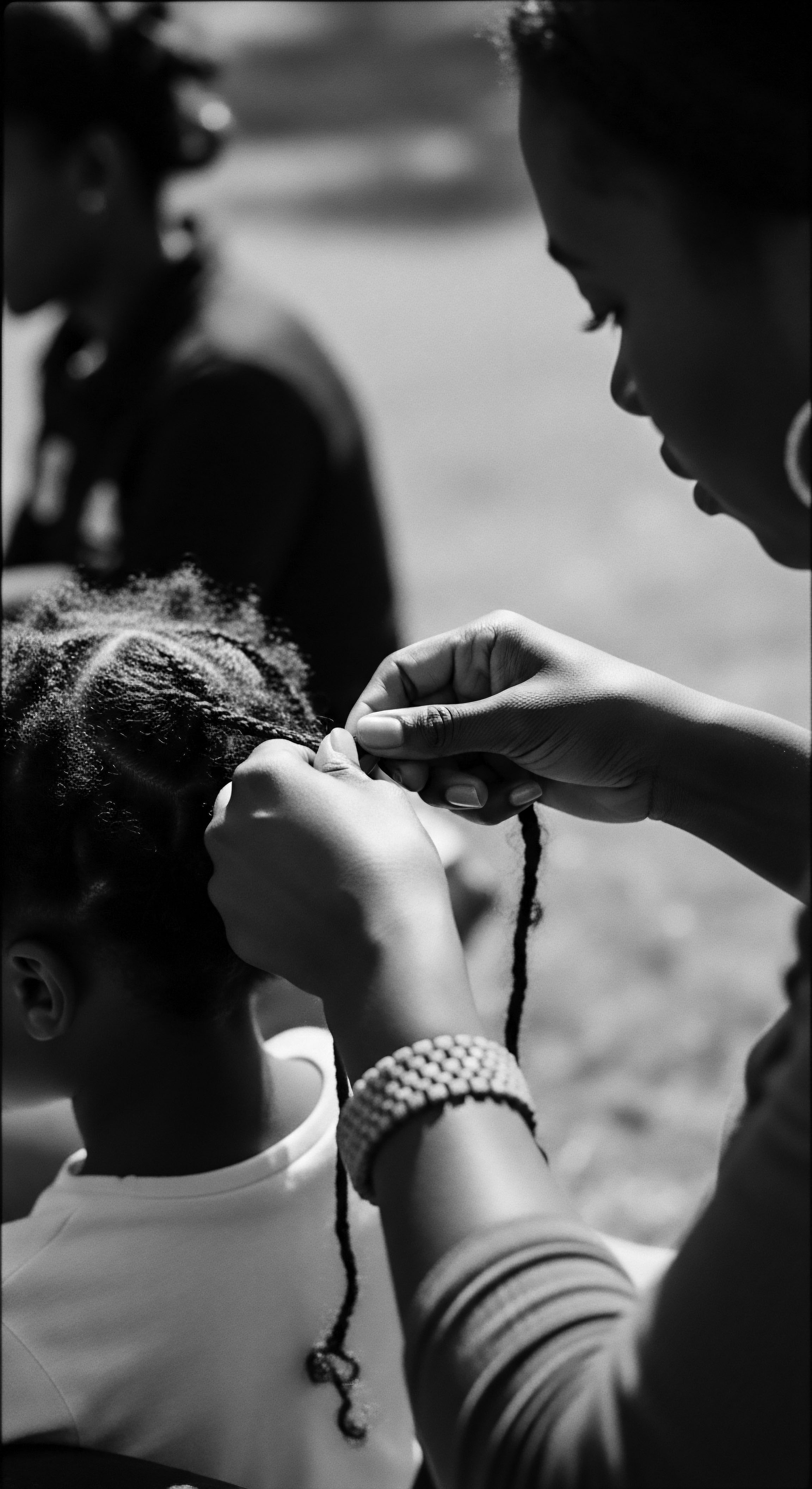
Modern Science Meets Ancestral Solutions
Contemporary research reinforces the ancestral understanding of hair’s fragility when confronting adverse water conditions. A 2018 study observed that ten minutes of exposure to hard water every other day for three months significantly decreased the Tensile Strength of hair samples, making them more susceptible to breakage. This laboratory finding lends scientific weight to the lived experiences of individuals who report increased hair breakage and difficulty detangling after prolonged use of hard water.
Current solutions to hard water challenges often echo or refine ancestral methods:
- Chelating Shampoos ❉ These products contain ingredients like EDTA or citric acid which bind to minerals, allowing them to be rinsed away. This mirrors the traditional use of acidic rinses to clarify and soften hair.
- Shower Filters ❉ Installing a shower filter removes minerals from the water before it reaches the hair, preventing buildup at the source. This offers a modern technological solution to an age-old environmental problem.
- Apple Cider Vinegar Rinses ❉ A timeless acidic rinse that helps remove mineral buildup and rebalance hair’s pH, directly reflecting traditional wisdom.
The interplay between hard water and textured hair is a complex chemical interaction with tangible physical outcomes. Yet, the remedies and coping strategies, both ancient and modern, speak to a continuous human effort to preserve hair’s vitality. The ongoing dialogue between scientific understanding and the rich tapestry of textured hair heritage ensures that our connection to these vital strands remains strong, honoring the wisdom of the past while embracing the clarity of the present.
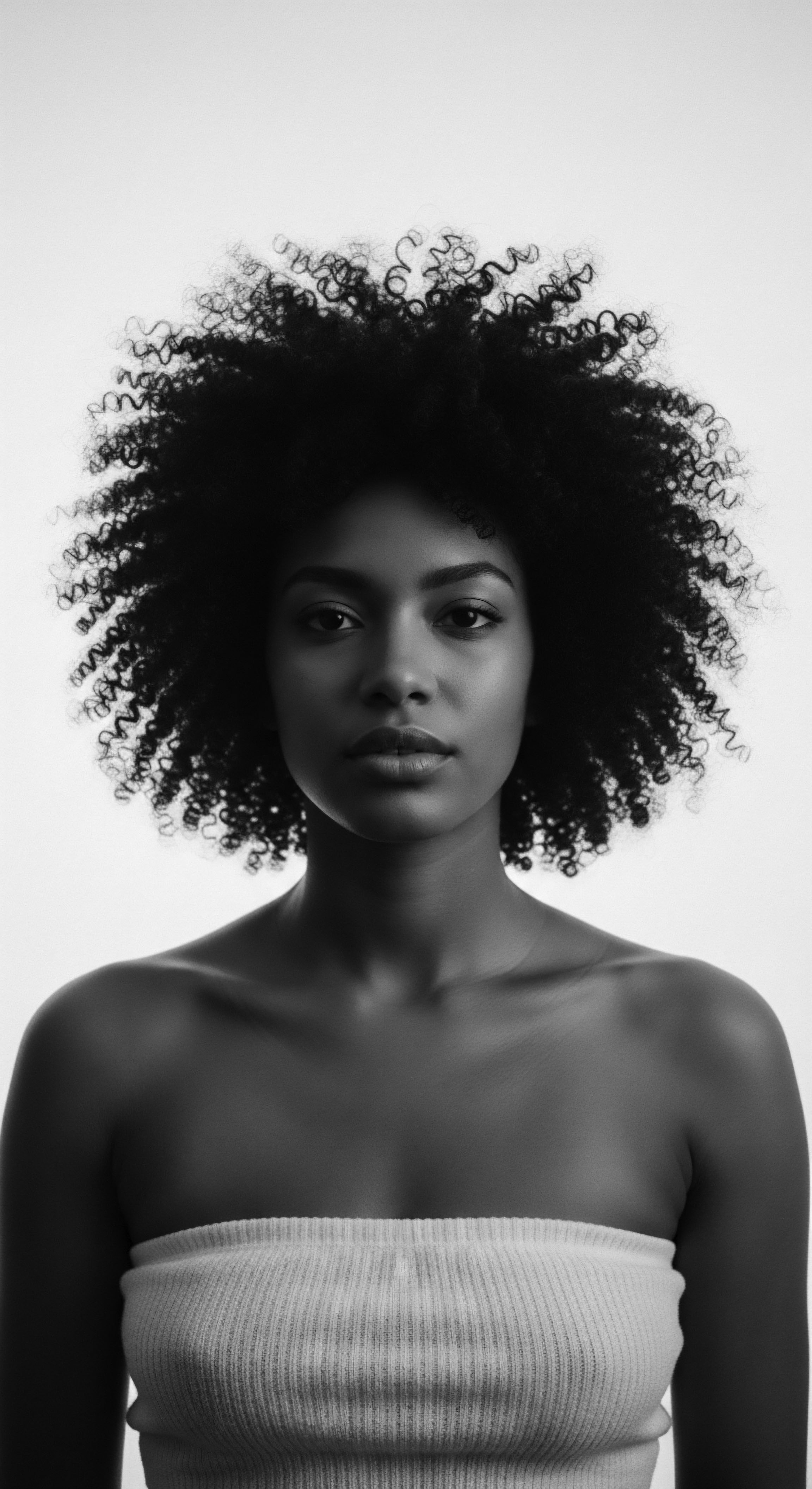
Reflection
As we consider the intimate relationship between water hardness and textured hair, we do more than simply dissect a scientific problem. We embark upon a meditation on heritage, on the enduring connection to what has been passed down through hands, through stories, through unspoken wisdom. The very essence of Roothea’s ‘Soul of a Strand’ ethos lies in this recognition ❉ that each coil, each curl, each kink, is a living archive, holding the echoes of journeys, adaptations, and triumphs.
The elemental composition of the water that graces our hair links us directly to the landscapes our ancestors inhabited, to the ingenuity they displayed in nurturing their crowning glory despite environmental odds. The challenges posed by mineral-rich water, whether in ancient riverbeds or modern plumbing, called forth a resilience in care, a deep understanding of what textured hair truly needs. It was an intuitive science, expressed through rituals of oiling, gentle cleansing, and protective styling. These practices were not merely cosmetic; they were acts of self-preservation, cultural affirmation, and spiritual connection.
Today, armed with a greater understanding of the precise mechanisms by which hard water interacts with hair’s structure, we stand at a unique juncture. We can now scientifically articulate why generations of caregivers intuitively reached for acidic rinses or rich butters. This modern clarity does not diminish the ancestral wisdom; it illuminates it, underscoring the profound observational knowledge held within those communities.
The story of water hardness and textured hair is a testament to an unbroken lineage of care. It speaks to the continuous search for balance, for a way to allow hair to flourish, no matter the circumstances. It is a story of adaptation, of finding grace and beauty amidst scarcity or challenge, of honoring the body’s offerings as a sacred part of the self.
In every wash, in every conditioning ritual, we are not just caring for hair; we are engaging with a legacy, carrying forward the tender thread of heritage that binds us to those who came before. The unbound helix of textured hair continues its dance with the elements, forever rooted in its magnificent past.
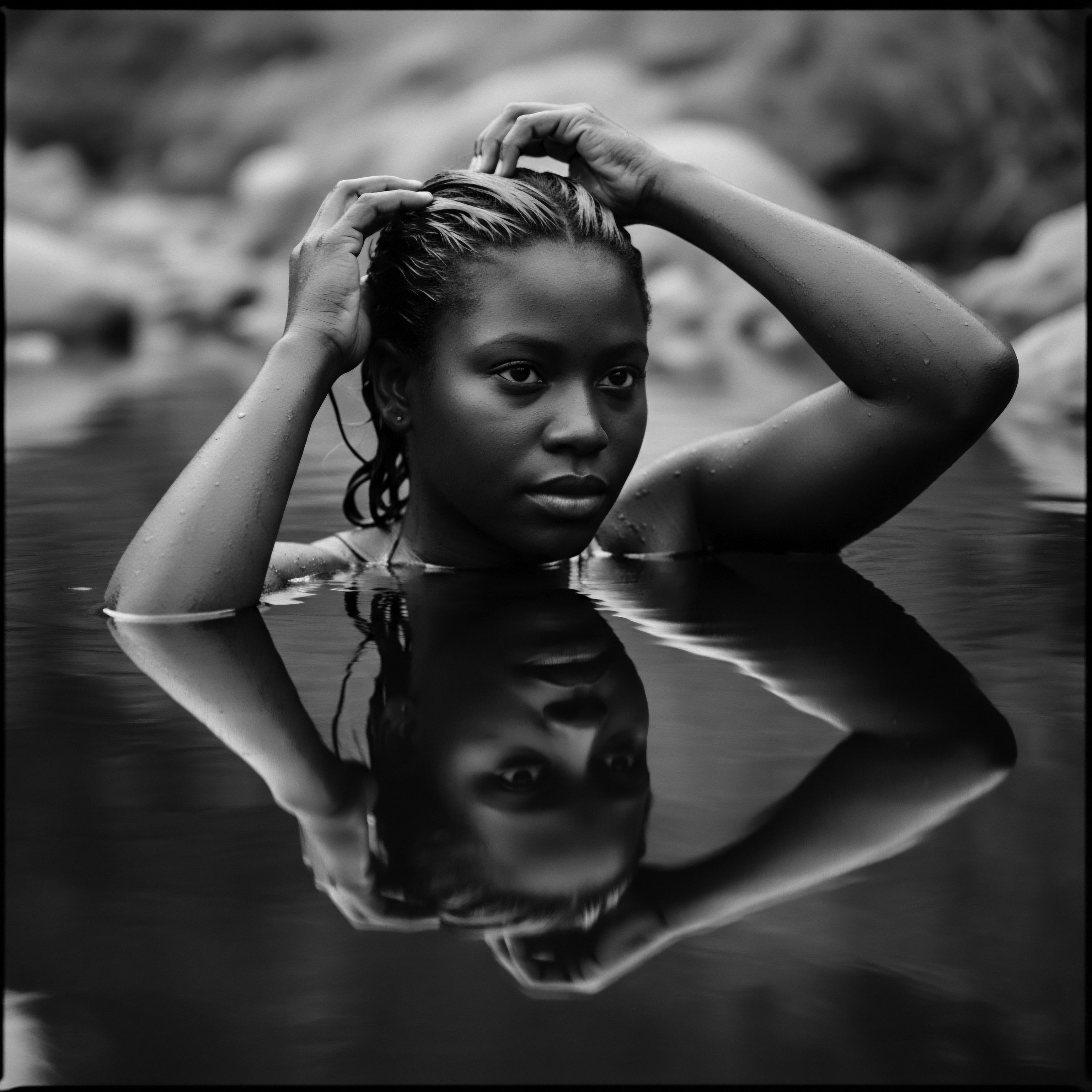
References
- Ahn, H. J. & Kim, S. N. (2011). The structural implications of water hardness metal uptake by human hair. Journal of the Society of Cosmetic Scientists of Korea, 37 (4), 311-318.
- Loussouarn, G. Lozano, I. Panhard, S. Collaudin, C. El Rawadi, C. & Genain, G. (2016). Diversity in human hair growth, diameter, color and shape. An in vivo study on young adults from 24 different ethnic groups observed in the five continents. European Journal of Dermatology, 26 (2), 144-154.
- Muchaonyerwa, P. et al. (2017). Hair from different ethnic groups vary in elemental composition and nitrogen and phosphorus mineralisation in soil. Environmental Science and Pollution Research, 24 (7), 6520-6527.
- Robbins, C. R. (2012). Chemical and Physical Behavior of Human Hair (5th ed.). Springer.
- Rogers, G. E. & Rogers, R. W. (2000). The Human Hair Follicle ❉ Biology and Disease. Dekker.
- Srinivasan, R. et al. (2016). Scanning electron microscopy study of hair shaft changes related to hardness of water. International Journal of Trichology, 8 (4), 184-187.
- Tolliver, S. Potts, G. Wong, N. & Williams, K. (2025). Historical Perspectives on Hair Care and Common Styling Practices in Black Women. Cutis, 115 (3), 95-99.
- Villas Boas, M. A. & Reis, J. M. (2018). The influence of hard water on hair. Journal of Cosmetic Science, 69(6), 469-478.
